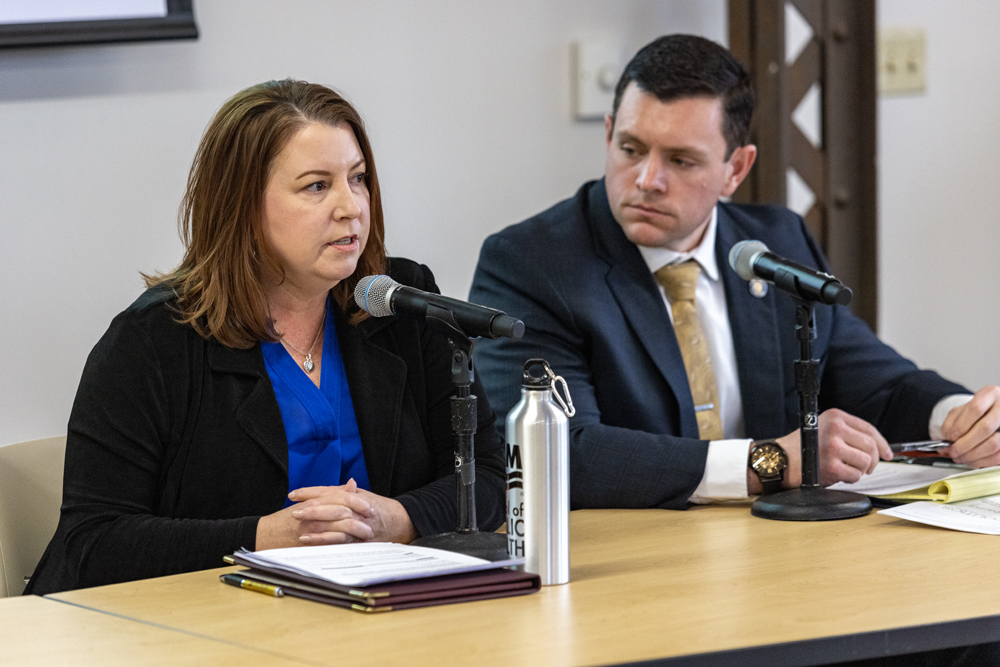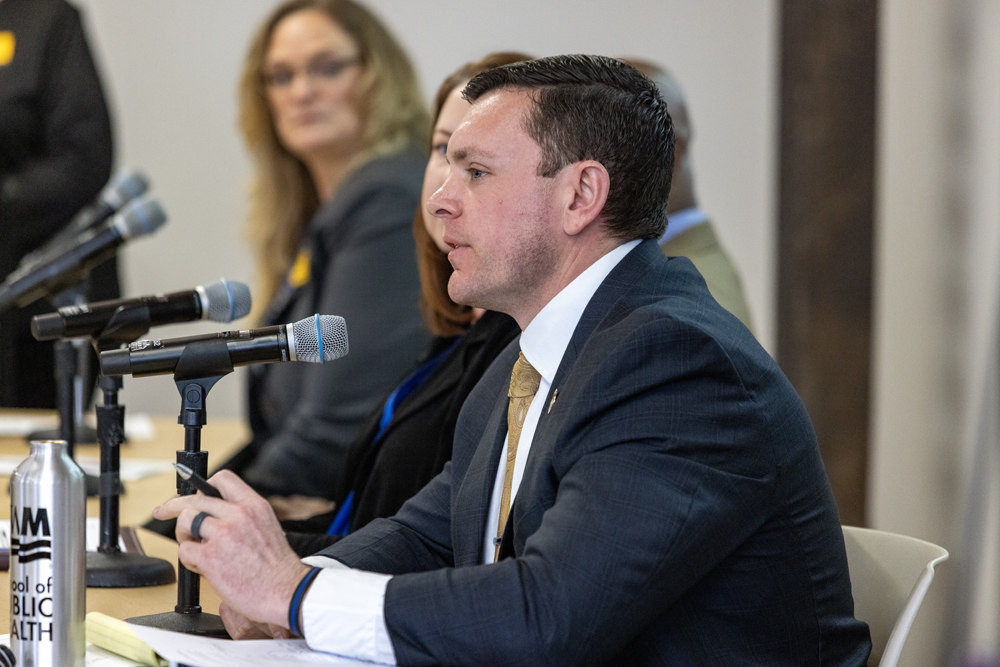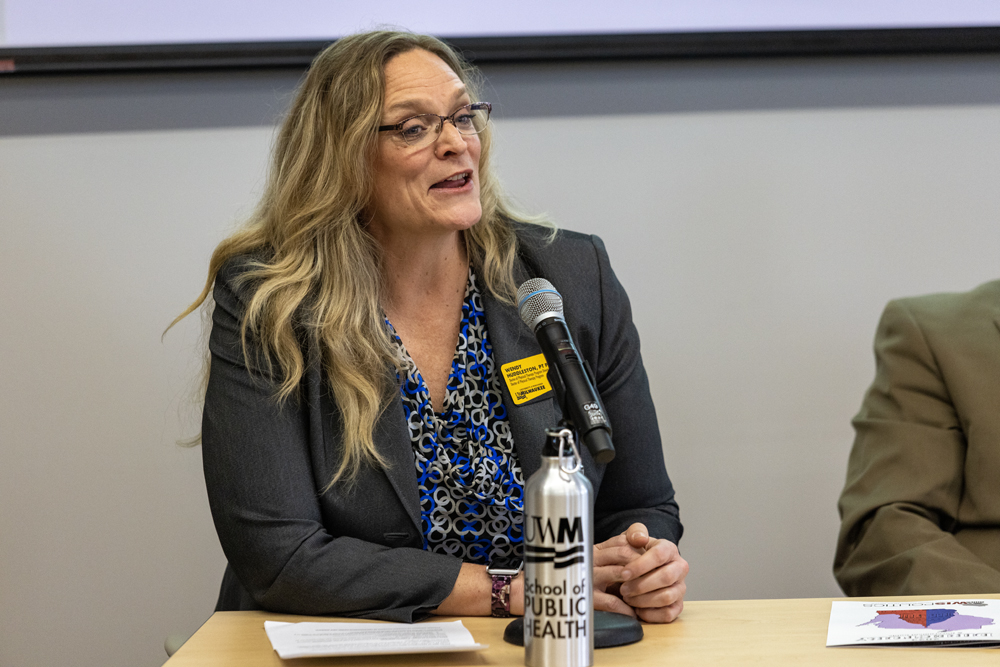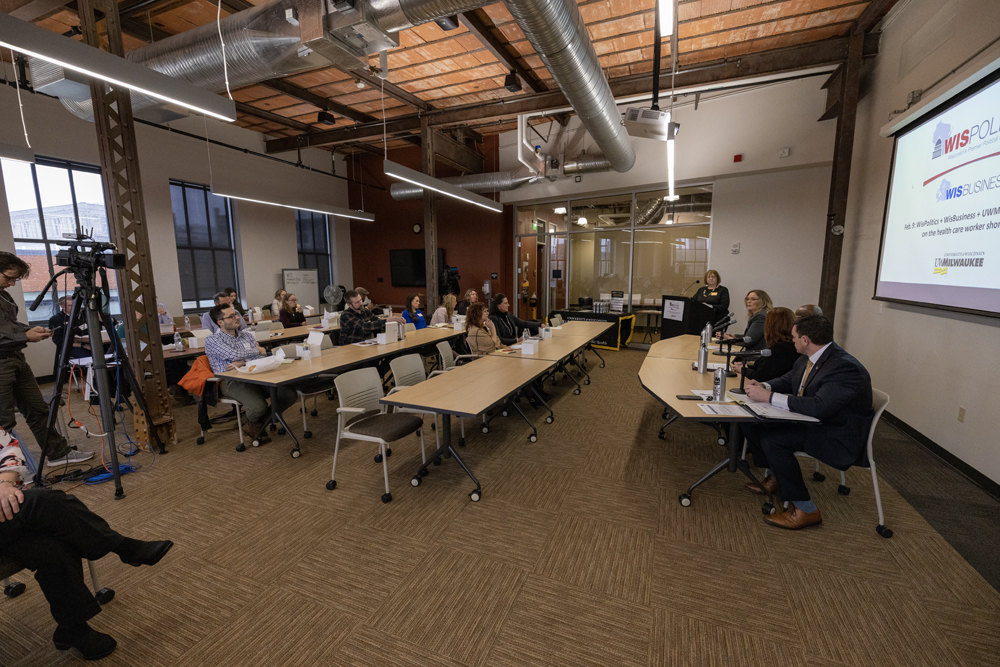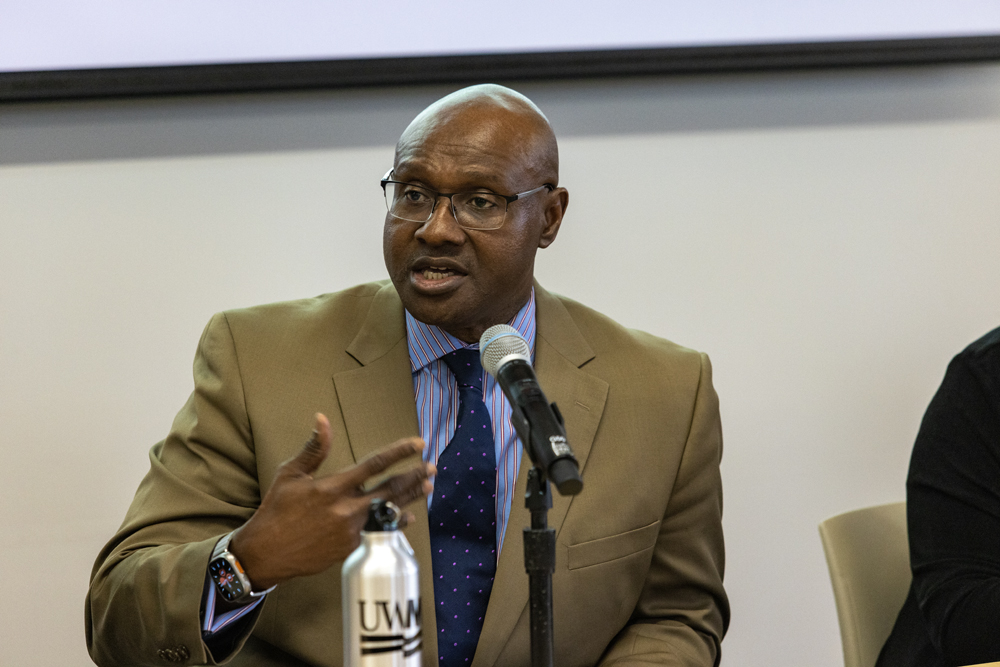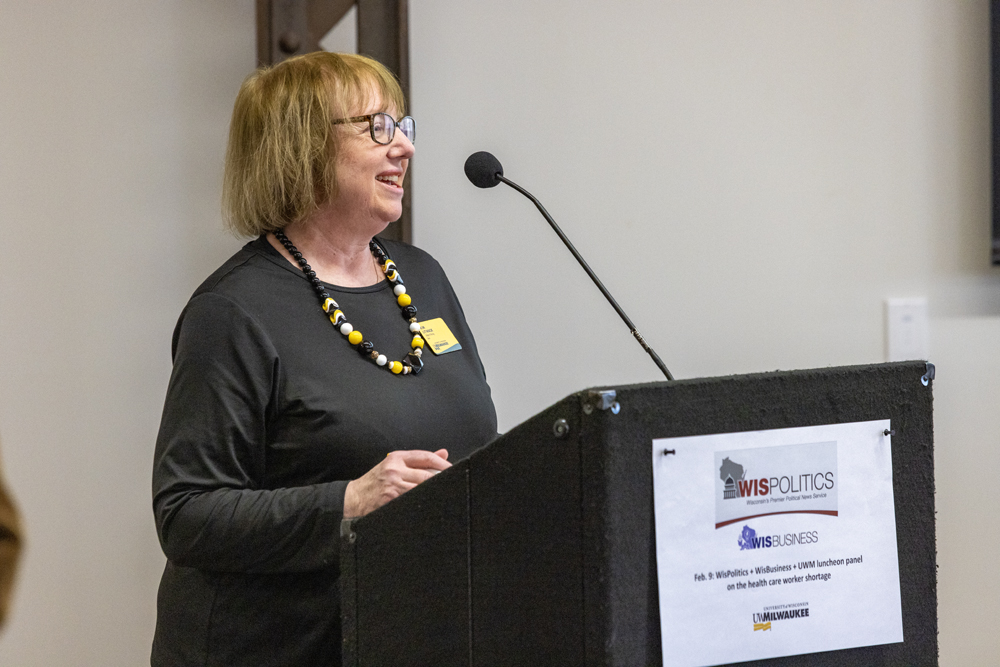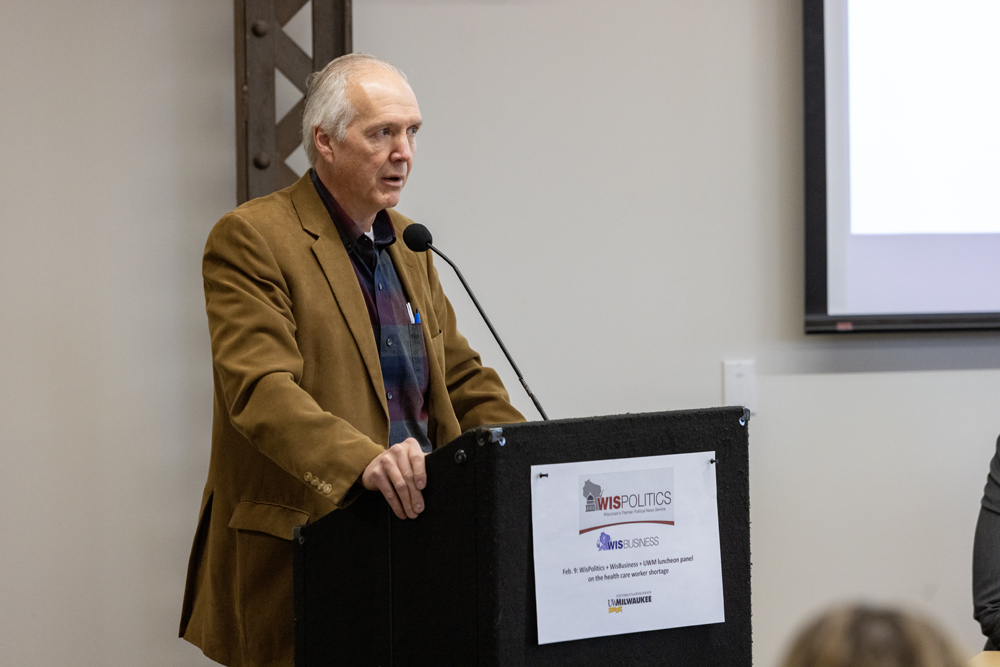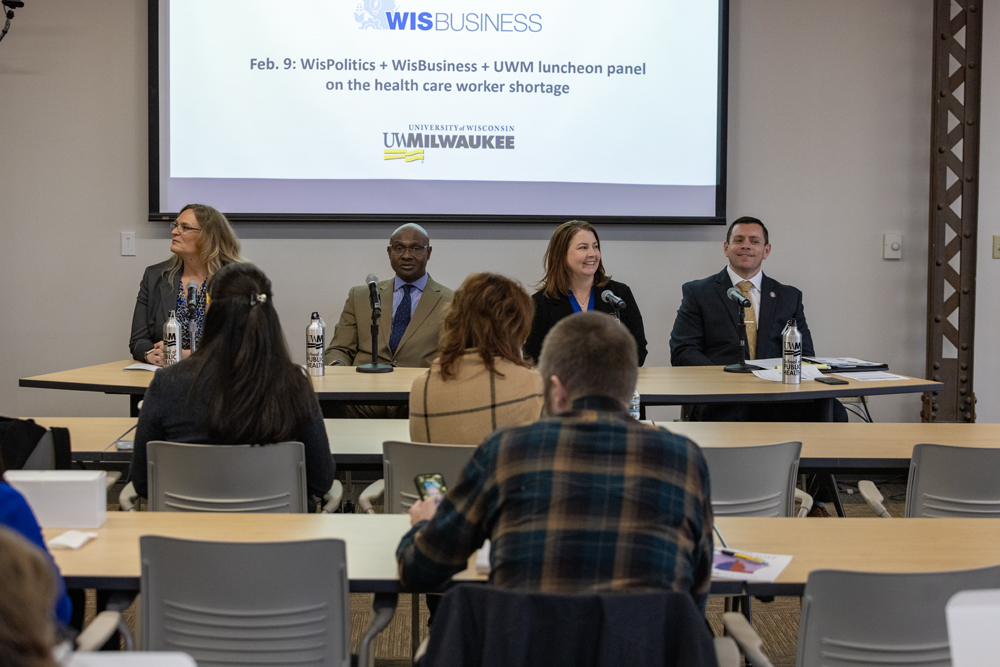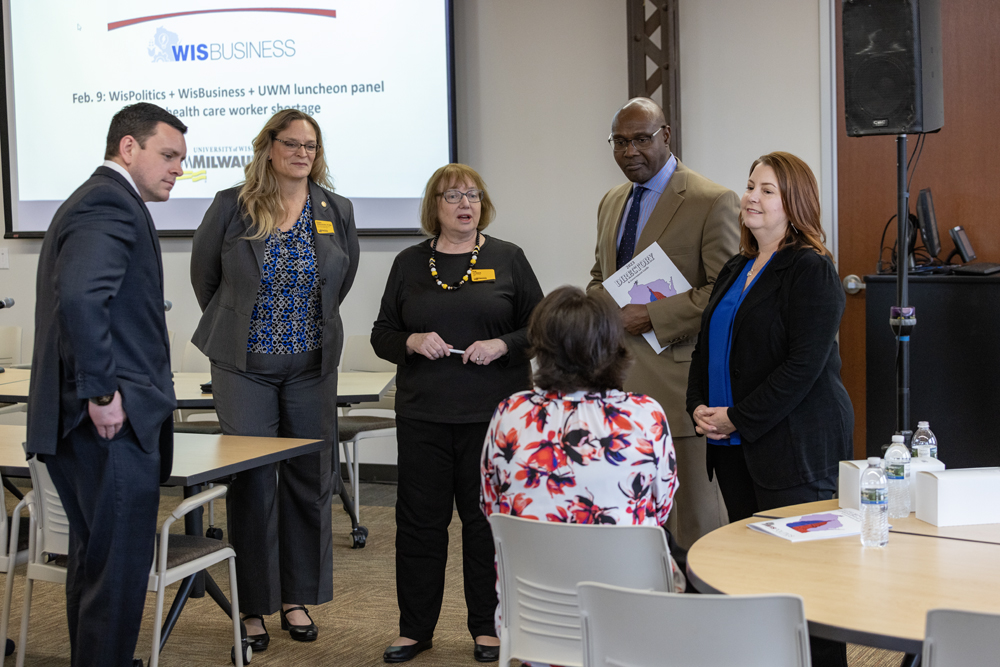Increasing pay and creating avenues for more affordable education could entice more young people to enter a health care profession or help retain workers in an industry that is especially struggling to fill jobs.
Panelists at a lunchtime discussion Thursday about the acute shortage of health care workers also pointed to easing the burden of required administrative work as a way to keep nurses, doctors, home health aides, physical therapists and other professionals motivated and focused on patient care.
Those were among possible solutions to the workforce crisis offered by participants during the forum at UWM’s School of Public Health sponsored by WisPolitics.com, WisBusiness.com and the university.
With local and national unemployment rates near historic lows, many industries are struggling to attract and retain workers. The problem in the health care industry has been particularly difficult, exacerbated by increased demand and burnout related to the COVID-19 pandemic.
“We already had challenges in terms of staffing … but this really hit us hard during COVID,” said Dr. Leonard Egede, a professor at the Medical College of Wisconsin. Medical professionals worked long hours during the height of the pandemic to treat patients.
‘Don’t have the manpower’
Hospitals have come out of that phase, though the issue now is maintaining staffing levels at a time when new hospitals are coming online.
“We just don’t have the manpower right now to do all that we need to get done to get things where we need to be,” he said. A shortage of medical assistants, for instance, has affected staffing in clinics.
Nicole Pretre, president and CEO of Cedar Community, pointed to similar shortages exacerbated by COVID burnout. Wendy Huddleston, associate professor and director of the physical therapy program in the UWM College of Health Sciences, noted the similar impact that working through COVID had on the mental health of those in her profession.
State Sen. Patrick Testin, a member of the Wisconsin Legislature’s Joint Finance Committee and the Senate Committee on Health, said a positive to emerge from the pandemic was the rise in the use of telehealth services.
He also sympathized when Egede and Pretre discussed the volume of administrative work that health care professionals are required to fill out, keeping them from their primary duties of caring for patients.
“We should not be limiting health care professionals’ ability to practice health care,” Testin said. “Let them do their jobs, and they will rise to the challenge.”
Some solutions
Pretre praised the state for starting to recognize and support the need for additional health care-related funding to help grow and maintain the workforce.
“We need to be able to pay our workers a living wage. In order to do that, we need funding,” Pretre said. “We need established payment standards that will actually cover the total cost of care – not just the actual caregiving, but the support services that go with that and the physical plant services that go with that.”
Pretre also said there was a need at the federal level for balanced immigration reform to look at worker visas and visa programs for essential workers in fields including health care.
The long game
Kim Litwack, dean of UWM’s College of Nursing and moderator of the panel, noted a 2020 Wisconsin Center for Nursing survey in which 23% of respondents said they intended to leave nursing in five years, with another 44% in 10 years.
“As a result, one of the things we have to look at is how do we replenish the pipeline,” Litwack said. Other panelists expressed similar worries.
The need in southeastern Wisconsin is compounded by the state’s demographic problem, with fewer teenagers graduating from high school because of population shifts.
One way to generate interest in a future career in health care is to start reaching out to students as early as middle school to expose them to the profession. For instance, rehabilitation sciences and technology faculty members at UWM speak with middle and high school students at summer camps.
She also said a solution was needed to address the disenfranchisement of people of color or underrepresented minorities who don’t trust the health care system.
“Our health care system is broken in southeastern Wisconsin. If we don’t fix that, we’re not going to have students who want to go into health care,” Huddleston said.
Growing programs
While most higher education health care program graduates in Wisconsin stay in state to fill jobs, these programs often have more applicants than openings for students, Litwack said.
One way to address the need is to improve and add spaces to admit more students, Huddleston said. She added that her department’s accrediting body just allowed for a 50% increase in class size, though there is no increase in classroom space.
“I really do think that we are at the point of a health care revolution, and we need to be able to teach our students to innovate,” Huddleston said. “And that requires state-of-the-art spaces.”
Huddleston said UWM addresses that need now in part through partnerships that provide students learning opportunities while building relationships in the community.
